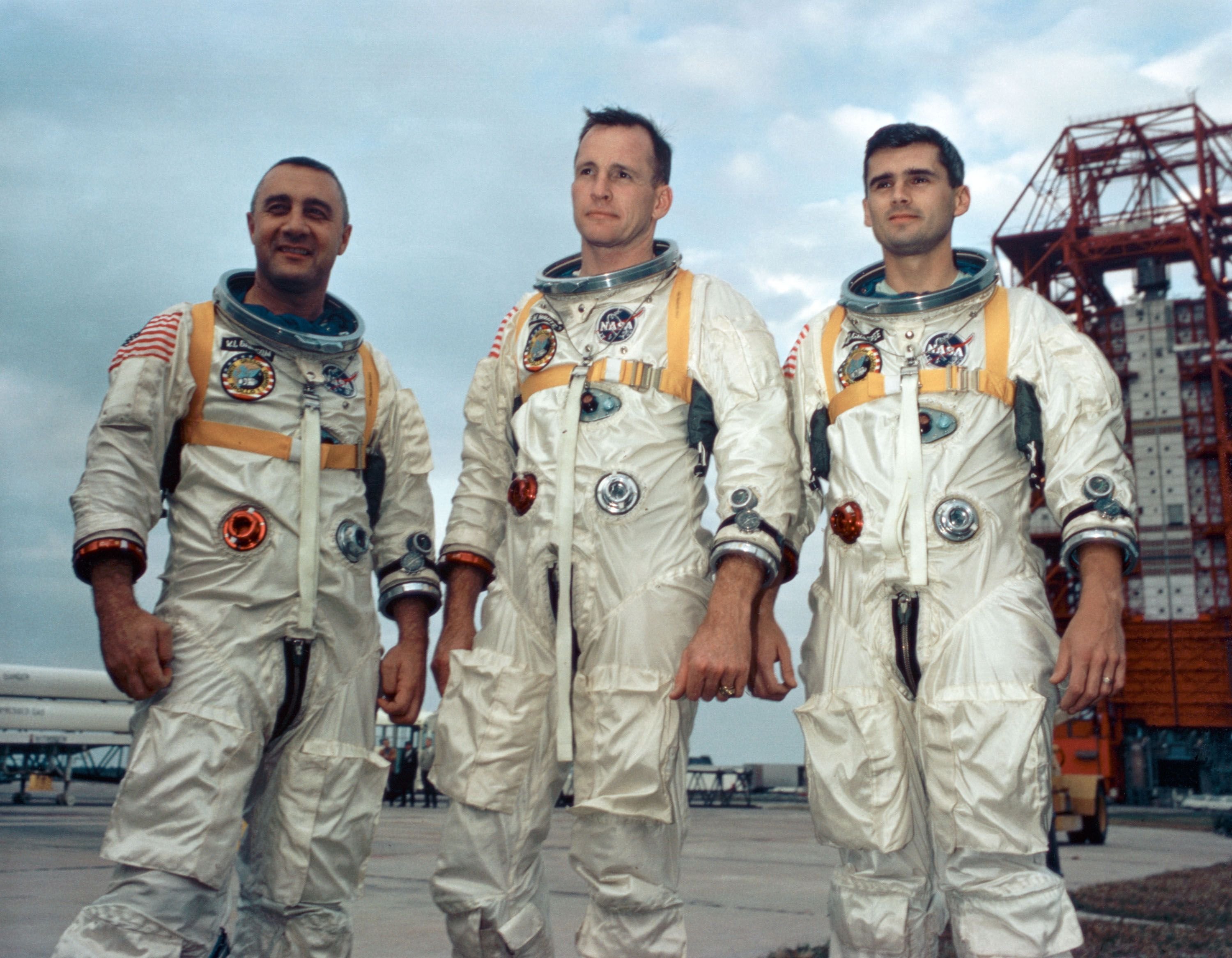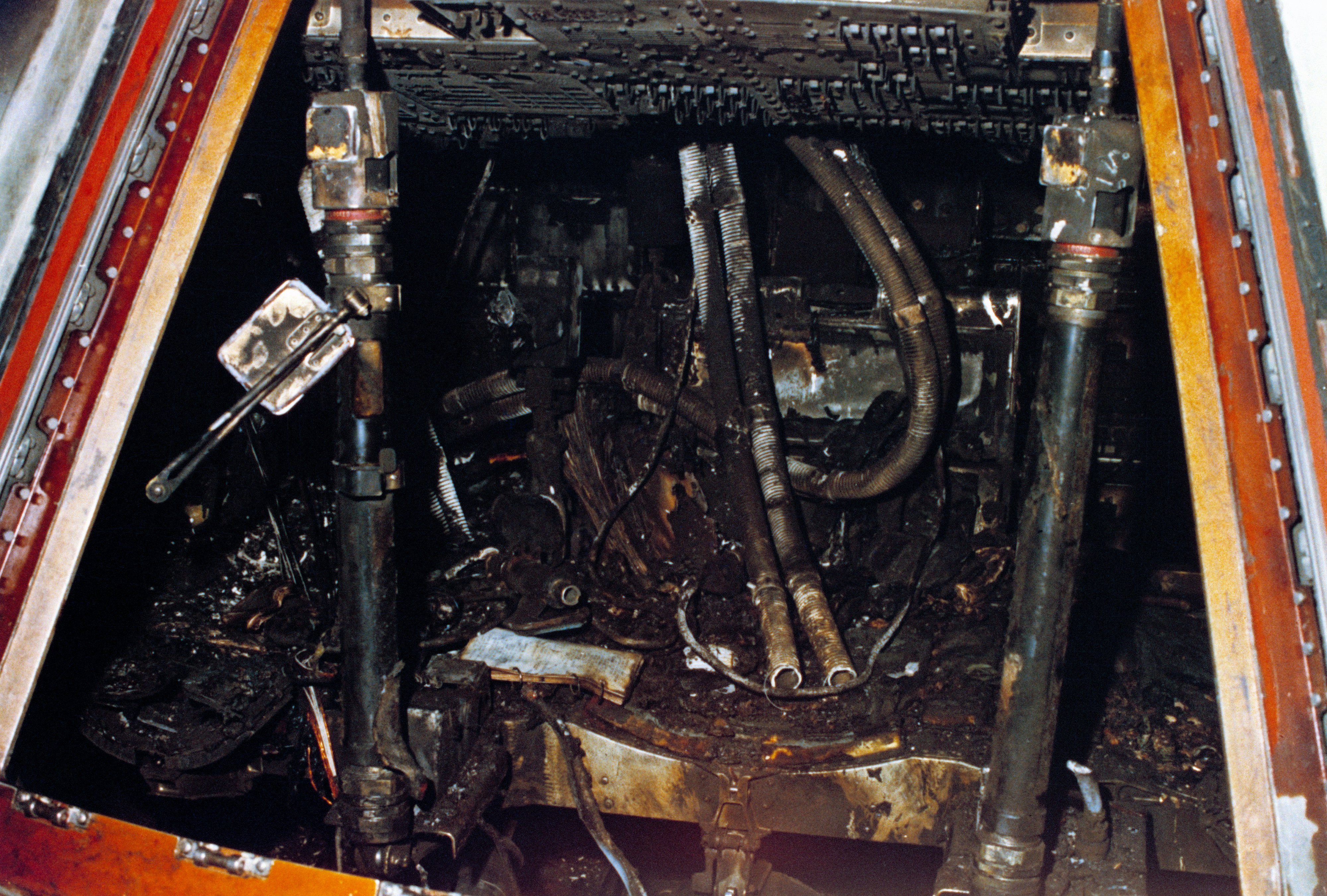The 50th anniversary of the Apollo 1 fire was just a few days ago. With this disaster back in the news, I decided a three part series on some of NASA's most infamous disasters could be timely. While almost everyone has heard of these events, there's more to the story than just what gets in the news. Going back over these tragedies is important. There is a lot to learn from our failures, and no one would want mistakes repeated. I do my best to keep the lessons learned from these events in mind as I do my own engineering work. While I don't get to work on spaceships, I want to avoid mistakes in my own work.
Following on the success of the Project Mercury and Project Gemini, NASA established Project Apollo with the goal of putting a man on the moon. The first manned mission for this program was fittingly called Apollo 1. This was NASA's most ambitious mission to date, with a larger command module that seated three astronauts. For the first mission Gus Grissom, Ed White II and Roger B. Chaffee were selected for the crew. Gus and Ed were both experienced astronauts, while Roger had yet to reach space.

From left to right: Gus Grissom, Ed White II and Roger Chaffee
Unfortunately, the Apollo 1 crew would never make it off the ground. On January 27, 1967 a fire broke out during a launch rehearsal test. All three crew members were trapped inside. Autopsy reports would show that all three of the astronauts died from asphyxiation as the fire quickly burned off the oxygen and released carbon monoxide gas. The ground crew was helpless to save the trapped astronauts. They could do nothing but listen to their cries for help over the microphones.
The basic story is that the pure oxygen atmosphere used in the module caused the deaths of the three astronauts. Many people see this and leap to the conclusion that NASA had no idea what they were doing filling the space craft with a flammable gas. But there is much more to the story than that. How did an organization filled the most brilliant engineers and scientists make such a glaring mistake as turning the Apollo module into an oxygen bomb?

View into the module after the fire
The decision to use a pure oxygen environment dated back to the Mercury program. The one-man Mercury progam had a much smaller cockpit, so there was less risk of a large fire. The oxygen atmosphere worked well for the program and was continued into the Gemini and Appolo programs. In space, the oxygen pressure would be about a third of atmospheric pressure. Unfortunately, NASA had no way to test the module at anything less than atmospheric pressure on the ground. When they tried, regular air would simply seep in to the cockpit.
Additional design decisions only further contributed to the flammability problem. The hatch on the spacecraft was complicated and cumbersome. Even under good conditions, it took about a minute to open. That meant that when the fire did start, the astronauts were effectively locked in. No way they could escape in time. Also, the crew used a liberal amount of velcro inside the cockpit. In a 100% oxygen environment, velcro is incredibly flammable. Several times people complained about the dangerous amount of velcro, but nothing was ever done. Taken together, these factors creating the perfect conditions for the fire that took the lives of the Apollo 1 crew.

I wanted to include a photo of the crew from happier times as well
How did NASA go so wrong? To me the answer is two-fold. First, NASA became complacent. Because there had been no issues with fire in the previous programs, the proper emphasis was not placed on fire safety. When it comes to safety, the goal should be to always improve upon old designs. The Apollo module was much larger and complex than the Mercury module. NASA's safety precautions did not grow and develop with the program.
Second, everyone was under enormous pressure to speed up the program. Results were valued over safety. This creates a dangerous work environment where safety concerns may be brushed aside because they would slow the program down. Everyone knew that velcro was flammable, but they didn't have the time to clean out the module and find more permanent solutions to their storage problems. Similarly, the oxygen system had worked fine up to that point. Why take the time and resources to develop a complex life support system? These are two lessons I try to apply in my own work in the automotive industry. Delaying a project to do more safety testing will always get a few people mad at me. But I'd much rather have upset managers, than know I was partly responsible for a safety recall. Safety always has to come first, no matter the cost or timing.
I hope you enjoyed Part I. Keep an eye out for parts II and III! The article that gave me the idea to write about this appeared in the November issue of Air & Space magazine.
Image sources: 1 2 3
